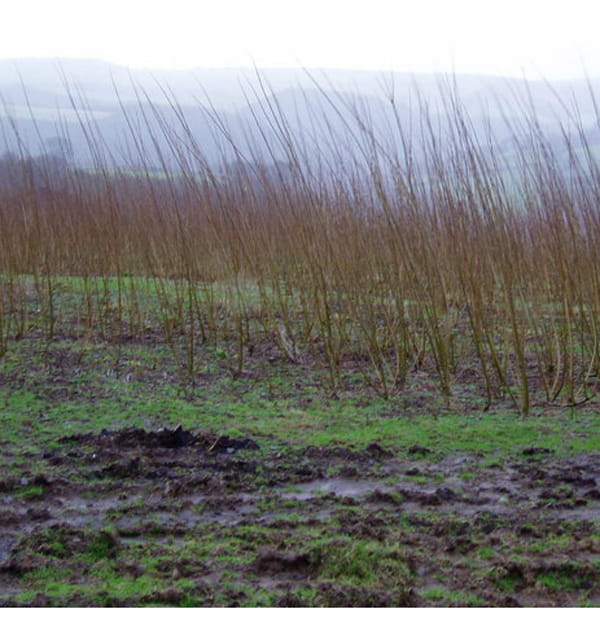NEWBIO partnership

- Bolstered by Research Consortium with Drexel, Jefferson’s Sidney Kimmel Cancer Center Earns NCI Comprehensive Cancer Center Designation
- Alyssa Kemp Named as 2024 Truman Scholar
- No link between acetaminophen use during pregnancy and children's autism risk
- Drexel Recognizes Gregory E. Deavens, CPA, CGMA as Business Leader of the Year

Could fields of perennial switchgrass and willow be the key to America’s energy independence? The U.S. Department of Agriculture wants to know and Drexel University’s Dr. Sabrina Spatari, an assistant professor of civil, architectural and environmental engineering in the College of Engineering, is trying to provide some answers in a complicated series of hypotheticals that could determine the nation’s path toward finding a substitute for oil.
Spatari has been tapped to join three separate teams of researchers who are looking at ways to turn plants into fuel for vehicles and energy production. Her expertise in life cycle assessment is providing answers to the tough questions about how people and the environment are likely to be affected by this new energy-making process.
“My job is to provide a systematic way of looking at environmental and economic impacts of essentially harvesting fields of switchgrass and willow and other woody plants and turning it into something you can put in your gas tank or home heating system,” Spatari said.
The process looks something like an incinerator at a waste management plant, but the material being fed into this reactor -the “feedstock”- is woody plants. The reactor doesn’t actually burn the plants, however, it is an oxygen-free environment that is heated to extremely high temperatures and through a process called pyrolysis the feedstock is converted into a brown fluid called “bio-crude” that is a precursor to biodiesel fuel.
“When you think about the oil industry, you can imagine that people living near an oil well or refinery would be affected, maybe even the ones living near the roads where oil tankers travel,” Spatari said. “For this land-based model of energy production, you have to image that the entire field of switchgrass is equivalent to the oil well – the energy is coming from a much larger area of land and must then be condensed into a fuel source that is small enough to transport – this does not happen without consequences for the environment and for people.”
Spatari’s main concerns are the effects of using land for the fuel production process that had previously never been used to grow a crop that was harvested, either due to the slope, soil quality or climate. Several of the plants that are being researched as feedstocks -the base substance for making the biofuel- have been chosen because they grow in marginal areas that are not being used for agriculture.
“Switchgrass and miscanthus are perennial plants that grow in places people would never think of farming, they’re wild-growing, hearty, weeds essentially,” Spatari said. “So we need to look at what happens to the soil and the water runoff in those areas if we actually start to harvest these plants.”
In addition to her risk assessment work, another of Spatari’s models addresses the socio-economic impact of using farm land to grow these “energy crops.”
“We’re looking at the feasibility of having farmers plant their off-cycle -or fallow- fields with the perennial energy crops. These plants can help replenish the nutrients in the soil and also be harvested for fuel production,” Spatari said. “But along with this comes the challenge of getting farmers to adopt this idea and looking at their opportunity cost in terms of the additional time it will take them to harvest the previously fallow fields and treat the crops for the fuel production process, as well as the costs of the equipment and labor to make the fuel and transport it.”
Guiding each of these models is the drive to minimize carbon-dioxide emissions, which occur during harvesting, processing and transporting the crops and fuel. This is why the USDA is funding six regional research groups, like the Northeast Woody/Warm-Season Biomass (NEWBio) Consortium, throughout the country to investigate the feasibility of each area producing enough biofuel to support itself without having to transport fuel from other areas.
These teams are built to assess all aspects of the process: developing and breeding plant feedstocks, picking the best conversion process, examining the socio-economic impacts on the region and –Spatari’s contribution- life cycle assessment.
“It’s important to take time for these calculations before beginning a project because if we can’t make this process environmentally preferable and economically feasible, if we can’t produce a fuel that –in the end- is cost competitive, or at least competitively priced compared to fossil fuels, then the technology will not be ready for the market,” Spatari said.
Drexel News is produced by
University Marketing and Communications.